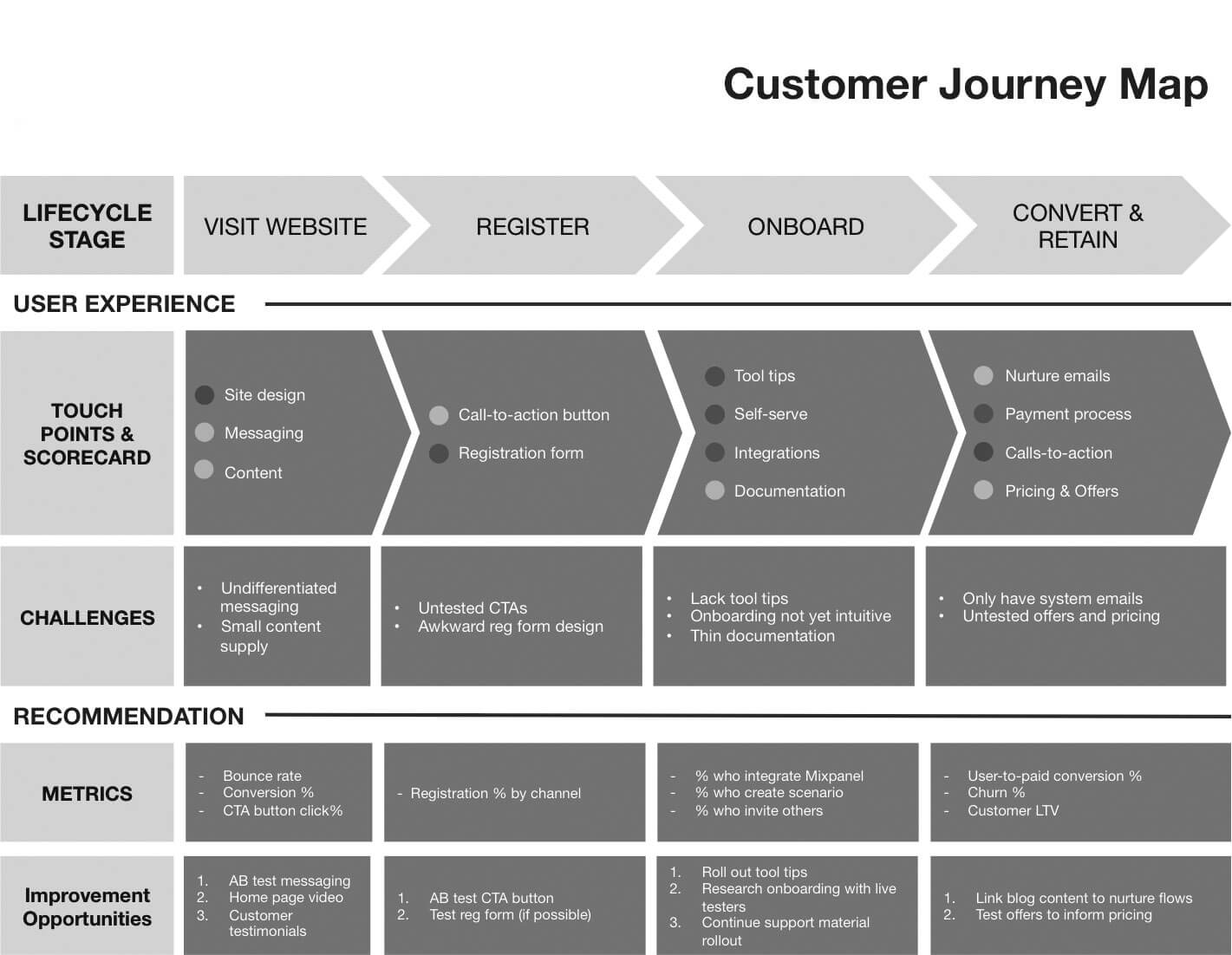Published in YFS Magazine by Lee Dale, March 11, 2016.
The virtue of maps, they show what can be done with limited space, they foresee that everything can happen therein.”
― José Saramago, The Stone Raft
Creating customer journey maps is one of the hottest trends in user-focused marketing today. Understanding how to use them allows businesses to maximize product potential by informing intelligent web design that interprets, predicts, and aligns web properties with the needs and desires of their user base.
Journey maps also increase the agility of websites and apps, allowing them to be both proactive and reactive to consumer desires and behavior.
Customer journey maps give marketers and product managers the ability to create websites, apps, and other digital products fine tuned to the needs of their customers, while also driving those users toward business goals. There’s no doubt, learning to create and use customer journey maps is an essential skill for entrepreneurs.
What is a customer journey map?
Customer journey mapping relies on the basic principle of cartography—creating a simple visualization that effectively communicates a complex reality.
A customer journey map is a detailed visual representation of the customer purchase and retention journey. It is a tool that helps to identify the customer’s desires, goals and actions they take to achieve them, all aligned to key business drivers.
The customer journey map gives new business leaders a tool to discover where business goals align with customer goals. With this information, they can better identify all relevant consumer touchpoints that shape their decision to choose, purchase, and continue to use products and services.
The map works both as an alternative to, or in conjunction with, traditional sales funnels. The sales funnel puts more focus on what businesses are looking to accomplish, while a customer journey map focuses on the state of mind of the customer and what the consumer seeks to accomplish through their interactions with a business.
The task then becomes to align your information, calls to action, and funnels, to the customer’s natural path as they interact with and move from channel to channel.
Building a customer journey map
Building a customer journey map requires four key points of information:
- Customer Profiles/Personas
- Behavior Stages
- Customer Goals
- Touchpoints/Channels
Customer Profiles/Personas
Personas are a commonly used tool to describe the relevant characteristics of a target customer. It’s a fictionalized summary created by gathering details of typical customers through interviews, surveys, and contextual inquiry.
Customer journey maps include personas as a way of illustrating how each customer type moves through a typical customer journey. In the map each persona type is generally presented as a specific person going through the stages.

Photo: © Monkey Business, YFS Magazine
For example, you may divide your key personas into mindsets and demographics such as single professional men, newlyweds, or baby boomer couples who are slow to adopt mobile devices.
Behavior Stages
Behavior stages show the typical steps that a customer takes as they choose and use a product or service. Customer behavior stages can vary from company to company or between different brands or products. User research combined with analytics will reveal the behaviour stages for a given customer journey.
An example of a common customer behavior stage progression could be:
Discovery → Research → Comparison → Selection → Conversion → Renewal
While in the past customer journeys were thought to be linear, today we know that customers can move through different stages in a circular or non-linear fashion.
Customer Goals
Customer journey maps should include customer goals for each of the behavior stages. Understanding people’s motivations as well as how goals change over time helps to create more effective and personalized engagement in each stage.
Mapping out customer goals helps uncover where customer goals intersect with business or product goals, helping to focus efforts on maximizing engagement and conversion potential while supporting an exceptional customer experience.
Touchpoints/Channels
Touchpoints are where the customer interacts with a business along their journey. Many of these interactions will correspond with behavior stages (see above).
At each of these touchpoints you should map the emotional (what is the user’s state of mind), social (what does the user need to discuss or share), and functional (what task(s) does a user need to be able to perform) requirements of the target personas.

Photo: © vadymvdrobot, YFS Magazine
With each of these considerations, you’ll learn more about how to communicate with your customers, how to support their needs, and what information, tools, and interactions you’ll need to help them reach the next step in their journey.
For example, if a customer has anxiety about a company’s credibility during the trial phase, marketing and product teams who are aware of these emotional considerations can make adjustments to alleviate these concerns, whether in the language used, the information communicated, highlighting security and safety, showcasing testimonials, and so on.
Your roadmap to customer experience success
Your end goal is to define the media and interactions that will best drive users to the next step in the customer journey and towards business goals. It’s essential when working through this part of the exercise that channel owners and stakeholders collaborate with the user’s journey in mind. Work together to understand how a customer can best move from marketing and sales driven awareness to product, retention, and support.
From step to step, touchpoint to touchpoint, the journey map becomes your roadmap to ensure the customer experience is effective, efficient, consistent, and joyful from start to finish.
Applying the customer journey map
The customer journey map is a highly effective tool to better understand and communicate customer needs and the actions your business needs to define to help users meet these needs. The map illustrates the relevant inputs that should inform key business interactions, media, content, and design decisions for a more streamlined customer experience.
When maps are used effectively, companies see an increase in conversions and engagement, while reducing customer support requirements. The end result? Happier customers who are more likely to purchase, renew, and advocate for your product or service.
This article has been edited and condensed.
Lee Dale is the co-founder of Say Yeah!, Toronto’s multichannel experience design studio. Say Yeah! specializes in user interface design with a focus on improving customer experience. We work across channels with an emphasis on web and mobile to ensure that digital products provide a great customer experience across all touch points. Since co-founding Say Yeah!, Lee has worked with numerous organizations big and small including Virgin Gaming, Kanetix, theScore, and many more. Their work has also helped their clients secure investments and beneficial partnerships with organizations such as Indigo, Microsoft, and Rogers. Connect with @sayyeahto on Twitter.
